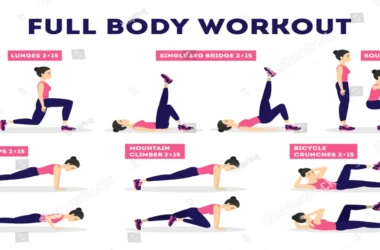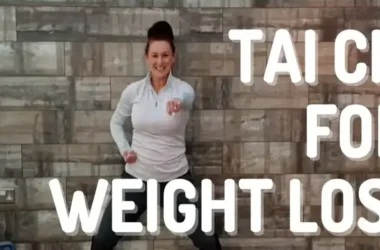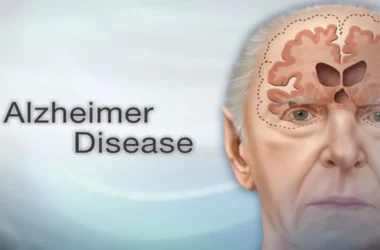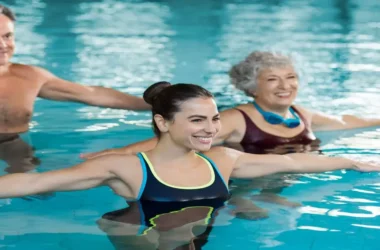[ez-toc]
As we age, it is common to experience a gradual loss of muscle mass and strength, a condition known as age-related muscle loss or sarcopenia.
This muscle loss can impact mobility, balance, and overall functional independence. However, regular exercise, specifically strength training, can play a crucial role in mitigating and even reversing age-related muscle loss.
In this article, we delve into the causes of age-related muscle loss and discuss how exercise can help address this issue.
Understanding Age-Related Muscle Loss
Age-related muscle loss is a natural consequence of the aging process.
Several factors contribute to this condition, including:
Reduced Anabolic Hormone Levels
As we age, the production of anabolic hormones, such as testosterone, decreases. These hormones play a significant role in muscle protein synthesis and maintenance. The decline in hormone levels can impair muscle growth and contribute to muscle loss.
Decreased Physical Activity
Many older adults become less physically active over time, leading to muscle disuse. Lack of physical activity and exercise can accelerate muscle loss and further decrease muscle strength and function.
Poor Nutrition
Inadequate protein intake and poor nutrition can exacerbate age-related muscle loss. Protein is essential for muscle synthesis and repair. Insufficient protein intake can hinder muscle maintenance and growth.
Inflammation and Oxidative Stress
Chronic inflammation and oxidative stress, which tend to increase with age, can negatively affect muscle tissue. These processes can accelerate muscle breakdown and impair muscle regeneration.
Video [5 Simple Exercises to Prevent Age-Related Muscle Loss]
The Role of Exercise in Addressing Age-Related Muscle Loss
Regular exercise, particularly strength training or resistance exercises, is a powerful tool for combating age-related muscle loss.
Here’s how exercise helps address this issue:
Stimulates Muscle Protein Synthesis
Engaging in resistance exercises activates muscle protein synthesis, the process through which new muscle proteins are created. This helps build and maintain muscle mass, counteracting the muscle loss associated with aging.
Increases Anabolic Hormone Production
Exercise, especially high-intensity resistance training, can stimulate the production of anabolic hormones like testosterone and growth hormone. These hormones support muscle growth, repair, and maintenance.
Enhances Muscle Fiber Recruitment
Strength training exercises target and activate specific muscle fibers, including fast-twitch fibers responsible for generating power and strength. Regularly challenging these fibers through exercise helps maintain their strength and functionality.
Also Read: Common Health Issues Faced by Elderly Individuals and How Exercise Can Help
Improves Insulin Sensitivity
Regular exercise enhances insulin sensitivity, and the body’s ability to use insulin effectively. Improved insulin sensitivity aids in nutrient uptake by muscle cells, facilitating muscle growth and repair.
Reduces Inflammation and Oxidative Stress
Exercise has anti-inflammatory and antioxidant effects, helping to mitigate the damaging effects of chronic inflammation and oxidative stress on muscle tissue. By reducing these processes, exercise promotes muscle health and slows down muscle loss.
Incorporating Exercise into the Routine
To address age-related muscle loss effectively, consider the following exercise recommendations:
Resistance Training
Engage in regular resistance training exercises that target major muscle groups. Use free weights, weight machines, resistance bands, or bodyweight exercises to challenge the muscles. Aim for at least two to three sessions per week, allowing for adequate rest and recovery between sessions.
Progressive Overload
Gradually increase the intensity, duration, or resistance of your exercises over time. This progressive overload stimulates muscle adaptation and growth. Work with a fitness professional to design an appropriate and progressive exercise program.
Variety in Exercise Selection
Incorporate a variety of exercises to target different muscle groups and stimulate overall muscle development. Include compound exercises, such as squats, lunges, bench presses, and rows, which engage multiple muscle groups simultaneously.
Proper Form and Technique
Maintain proper form and technique during exercises to ensure safety and effectiveness. Seek guidance from a qualified fitness professional if needed, particularly when starting a new exercise program or using equipment.
Adequate Nutrition
Support your exercise efforts with a well-balanced diet that includes sufficient protein to support muscle growth and repair. Consult a registered dietitian or nutritionist for personalized dietary recommendations.
Regular Physical Activity
In addition to strength training, incorporate other forms of physical activity into your routine. Include aerobic exercises, such as walking, swimming, or cycling, to promote overall cardiovascular health and support an active lifestyle.
Conclusion
Age-related muscle loss is a common concern for older adults, but it is not an inevitable part of aging. Regular exercise, particularly strength training, can help address and even reverse age-related muscle loss.
By stimulating muscle protein synthesis, increasing anabolic hormone production, enhancing muscle fiber recruitment, improving insulin sensitivity, and reducing inflammation and oxidative stress, exercise promotes muscle growth and maintenance.
Incorporate resistance training into your routine, gradually increase the intensity, and ensure proper nutrition to support your muscle-building efforts.
Consult with healthcare professionals or fitness experts to design a safe and effective exercise program tailored to your individual needs.
With regular exercise, you can combat age-related muscle loss and maintain strength, mobility, and functional independence for a healthier and more active lifestyle.








Habe mit etwas über 30j mit dem Training im Fitness Studio 👍heute 52j. Alt und werde regelmäßig für Anfang Mitte 30j. Geschätzt 😁.
Alle 6 Wochen wird der Trainingsplan umgestellt zwischen Ausdauer und Kraft dabei immer auch gleich Gewichts Übungen und dehnen 👍😁